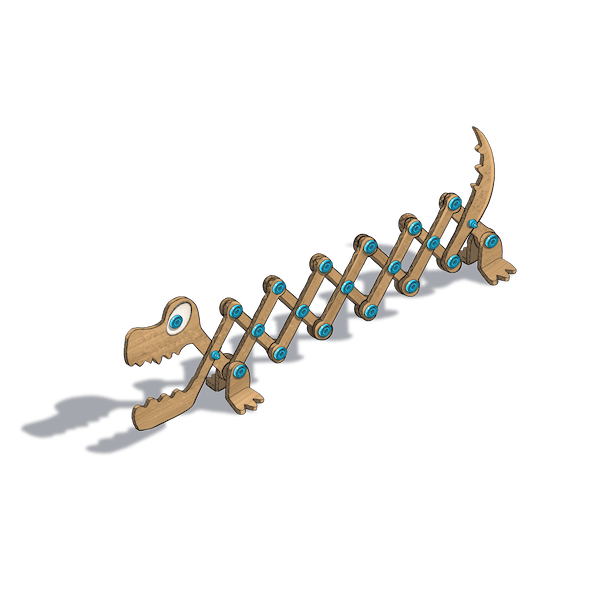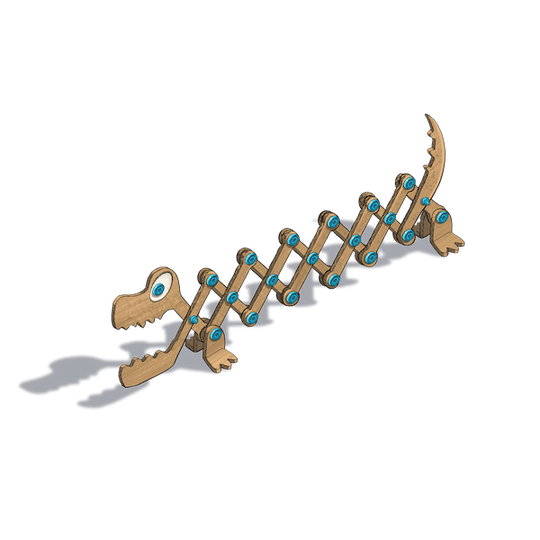Classroom Inspiration: the Castle Challenge
Covey Denton, STEM coordinator and Upper School Science Teacher in Wilson, North Carolina recently shared a design challenge she embarked upon with her students. We loved it so much that we asked her for more details.

Exploring the engineering design process with Makedo tools in lower-school science
In my lower-school science elective, I introduced K-4th graders to the engineering design process using Makedo tools. These simple yet effective tools are designed for building with cardboard. This Upcycled Design process tied directly with a visiting artist that was coming to our school. Bryant Holsenbeck incorporates recycled materials into her work, and before she arrived, all of the specialty classes were encouraged to incorporate recycled materials into their lessons. Because of this, I was able to collaborate with our media resource specialist and art teacher. This hands-on experience allowed students to engage in problem-solving, creativity, and iterative design while constructing elements for a collaborative castle project.
Learning the tools
Before diving into the design challenge, we dedicated a week to learning how to use the Makedo tools safely and effectively:
- Kindergarten and 1st Grade focused on twisting and untwisting Scrus into pre-punched holes in the cardboard pieces. We introduced terms like clockwise and counter-clockwise and everyone's favourite saying, "Righty tighty, lefty loosey," to help them remember which way to turn.
- 2nd and 3rd Grade took on additional skills, including punching their own holes, rolling creases with the Fold-Roller, and attaching and detaching pieces.
- 4th Grade mastered all of the tools, including the Safe-Saw, which allowed them to shape pieces with more precision.

The castle challenge
Once students were comfortable with the tools, they were challenged to design and build elements for a grand castle. This project encouraged them to think critically about structure, stability, and functionality. Some key elements included:
- Working drawbridge: Students created a working drawbridge by using a simple axis and cord with large sections of cardboard. The older students were challenged to think about where we should add in the axis and what structural supports would be needed to ensure that we could raise and lower the bridge multiple times without it failing.
- Walls and towers: This required problem-solving to determine the best way to connect turrets and create rounded sides. Students were also challenged with problem solving how to attach flat pieces to vertical supports, designing L shaped cardboard connectors. To brainstorm possible connections, I brought in a variety of gussets and brackets to inspire students to replicate using cardboard.
- Furniture and citizens: Students built so many things to accompany the castle; miniature thrones, guards, and even alligators for the moat! When designing animals, we asked, “What geometric shapes can we use to create cardboard animals?”
- Structural details: Students were particularly challenged by structural details. A big guiding question they had was, “How can we connect pieces of cardboard to ensure they stay in the positions that we want them to?” They were determined to keep the back and bottom of the cardboard throne at right angles. As a class, we looked at chairs in the room to see how adding arms or diagonal supports might help make the structure more sturdy and able to stay upright.
Technology additions: Our youngest engineers wanted to add technology like a castle TV and laptop. They enjoyed drawing the screens and including a hinge so that they were able to close the laptop.

Encouraging creativity and problem-solving
Beyond simply building, students were encouraged to iterate on their designs. If a chair collapsed, they brainstormed ways to reinforce it. If an alligator’s legs didn’t move, they explored different connection techniques. This iterative process mirrored real-world engineering, teaching them the value of persistence and creative problem-solving.
The result?
A dynamic, student-created castle filled with imaginative designs and innovative engineering solutions. More importantly, students walked away with a deeper understanding of how to test ideas, refine their work, and collaborate to bring their visions to life.
“More importantly, students walked away with a deeper understanding of how to test ideas, refine their work, and collaborate to bring their visions to life.”
The Makedo tools provided the perfect medium for young learners to explore engineering in a fun, accessible way. Watching their confidence grow as they tackled challenges and celebrated successes made this an incredibly rewarding experience.

Thanks to Covey Denton, Wilson, North Carolina USA.




 Learn more!
Learn more!



























